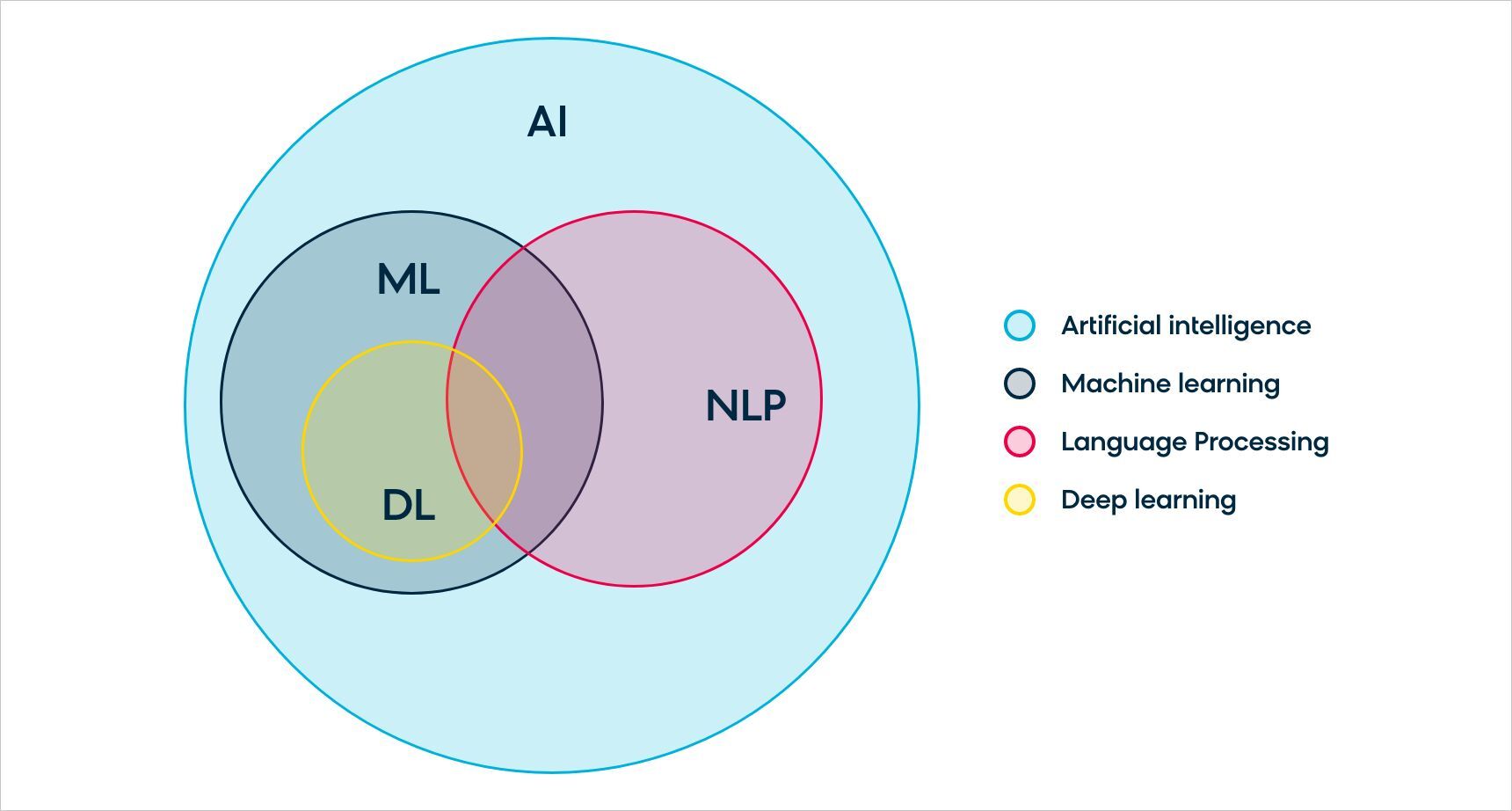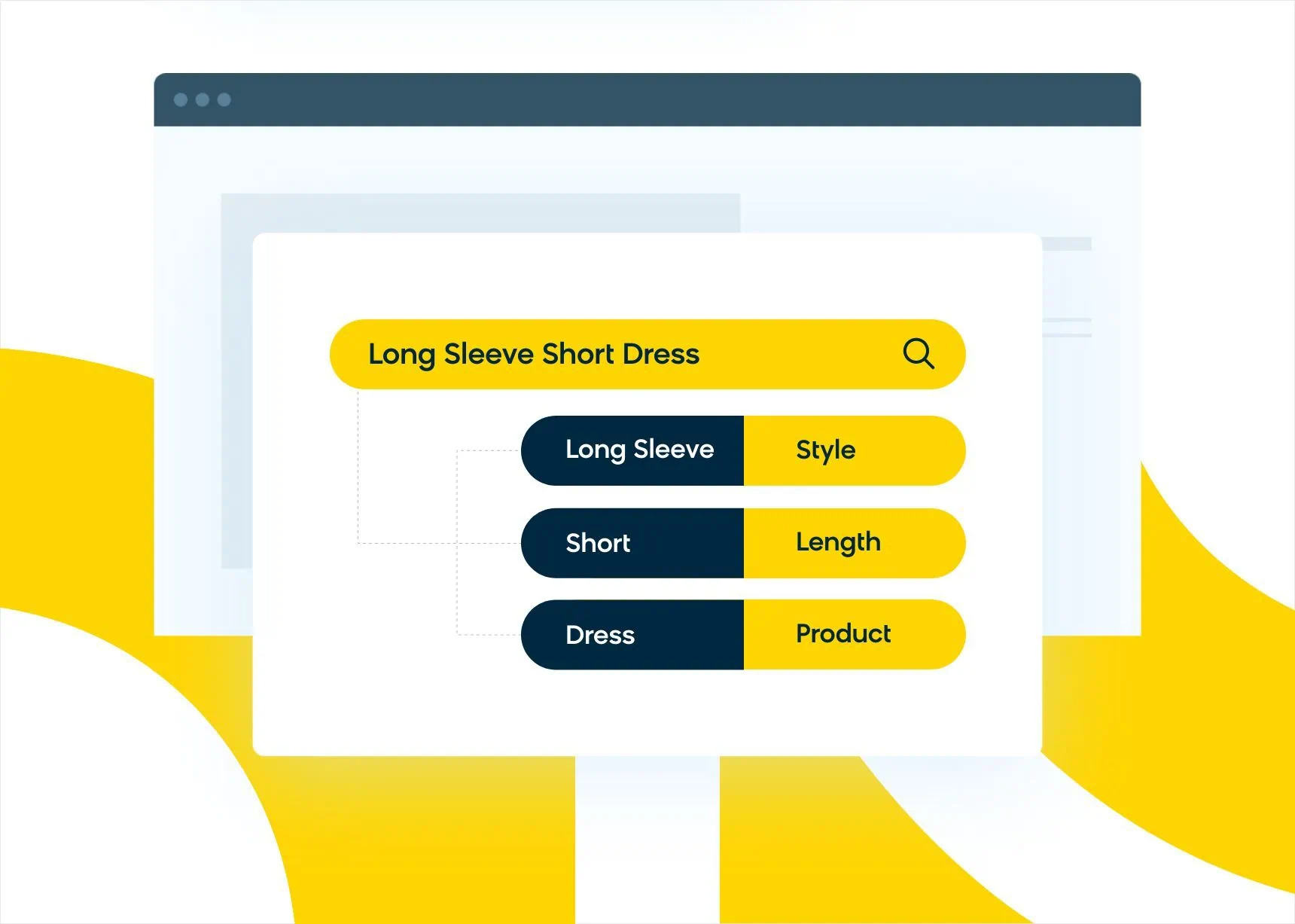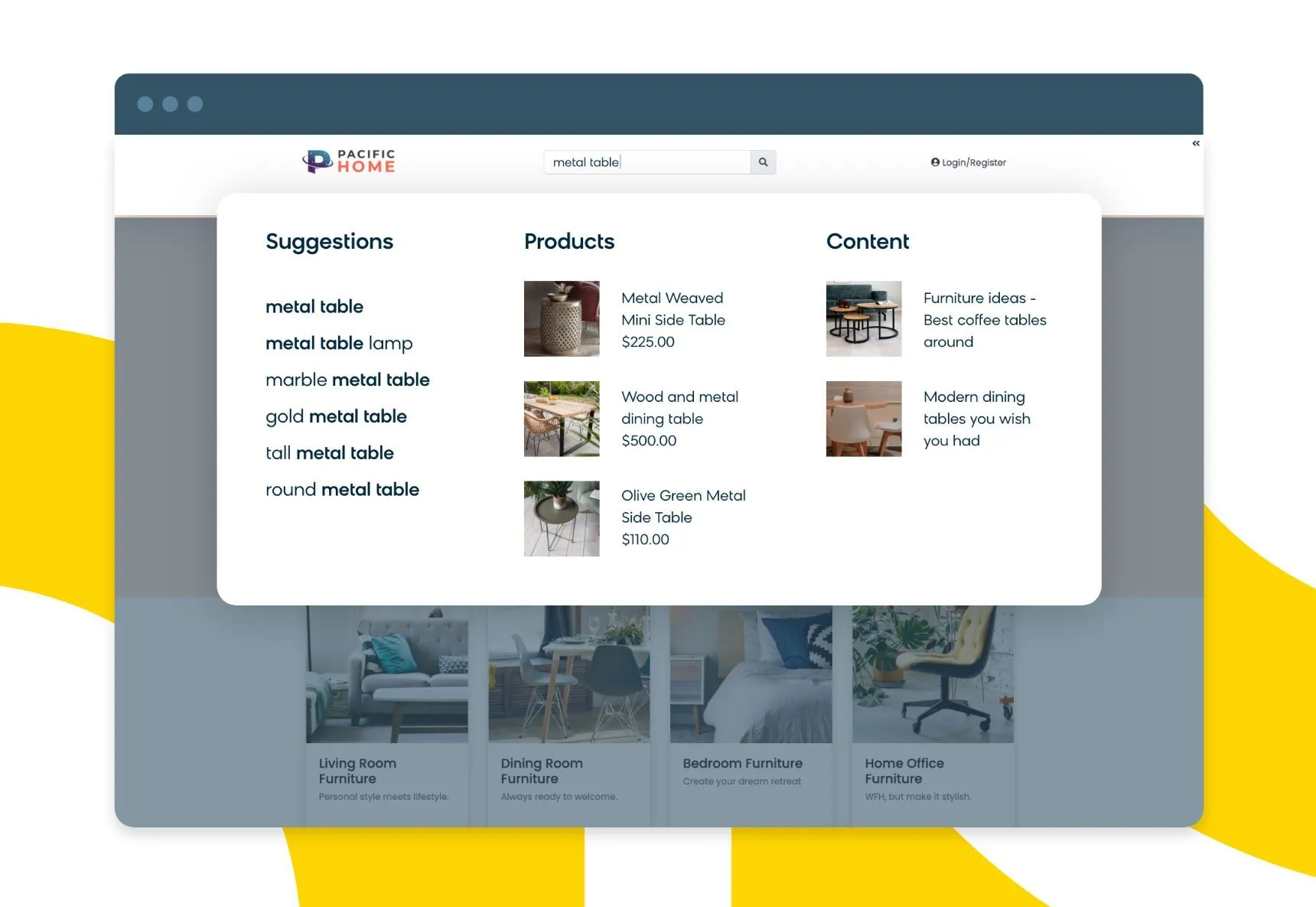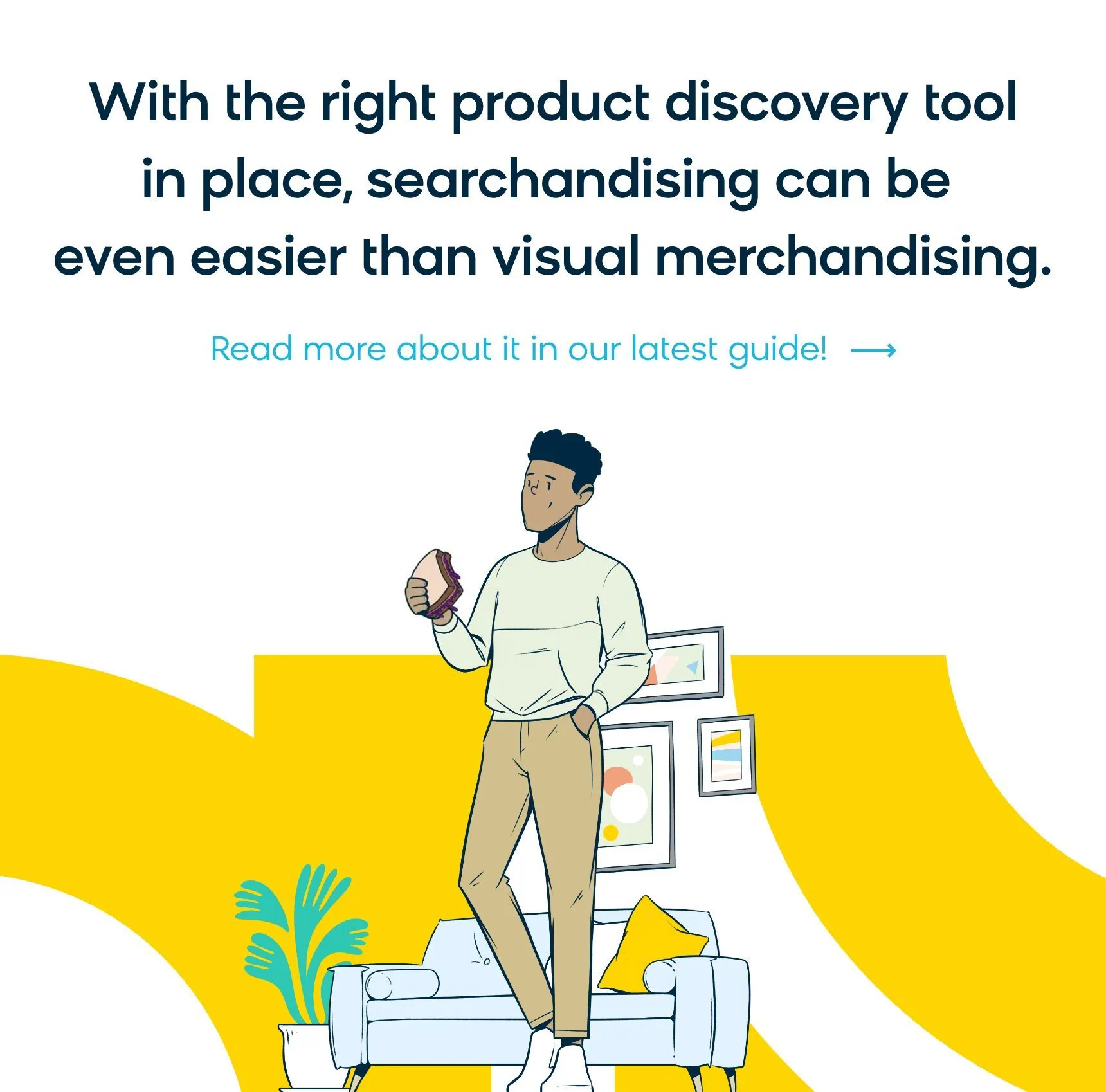Sure, we’ve all experienced instances where technology can be creepy. More often, though, we’ve experienced moments where technology’s ability to read our minds has been very convenient. Take the search bar, for example. If you’ve ever relied on the search bar’s autocomplete to fill in missing letters or correct misspellings, then you know first-hand how technology can lead to accurate and relevant results. Think of these search suggestions as a means of guiding your site visitors and a way to maximize the relevance of items in search results to increase revenue.
Autocomplete, often called autosuggest, surfaced at Google in 2004 — thanks to a junior software developer named Kevin Gibbs, who saw the technology that taps into the human collective consciousness as inevitable. But Google’s predictive search feature was just the beginning. Nowadays, autocomplete can be found across different devices (e.g., desktops, tablets, and mobile devices) and is incorporated in technologies beyond the search engine, like word processors, email programs, and source-code editors.
When talking about autocomplete suggestions in any type of search — whether it be content search or product search — it’s often referred to as “predictive search.” Predictive search has become a part of a website’s user experience (UX) over the past decade. It’s intended to give helpful suggestions to searchers, using natural language processing (NLP) and machine learning (ML). This artificial intelligence (AI) gets smarter with its suggestions over time as it learns from popular queries.
Unfortunately, just because predictive search has become more utilized in recent years, does not mean that everyone does it well. We’ll explain how predictive search works and why it can help your customers.
What Is Predictive Search?
Since predictive search no longer only applies to Google Search, it’s time to consider how exactly it’s different for the ecommerce industry. To start, it’s higher stakes. Because ecommerce site search is focused on products, not content, surfacing the right search result can lead to more revenue and higher ROI. As people have come to expect autosuggest in many aspects of their user experience, more brands and marketplaces have begun to see the value in predictive search and integrate it into their digital experiences: helping customers avoid typos, providing contextual suggestions, or simply displaying popular search queries in the most effective ways possible.
Search technologies using AI pick up on the terms your customers use when searching your site (i.e., search history, trending searches, and user behavior), regularly refreshing it to provide the most relevant results and improve your predictive search capabilities. Not only will predictive search help you capitalize on the traffic of certain queries by showing the right products to the right customer at the right time, but it will also suggest these products in a particular order, ranked based on engagement to establish trust with your customers and encourage them to convert.
How Does Predictive Search Work?
In a nutshell, predictive search can gauge the intent of your customers based on the queries they (and other shoppers on your website) type into the search bar. A good ecommerce search solution will account for every search, detect certain patterns, and adjust the search experience based on consumer behavior.
While accounting for popular searches across all sessions, your product search solution of choice should also analyze the audience segment, the geolocation of a particular search, and even the products you carry or have in stock. Once ML understands all the different data components, it will make intelligent suggestions that improve and personalize discoverability and decrease bounce rates.
Next, certain search solutions on the market will generate “structured” search queries using semantic understanding. This combination of NLP and ML can determine a search query’s contextual meaning and intent by separating products from their attributes. With it, brands can introduce new product lines into their catalog and help those offerings get discovered in a way they wouldn’t have before. When you implement predictive search, for instance, a search for “dinner set” could have a corresponding structured search query of “red metallic 12-piece dinner set.”
Last but not least, some rules determine how suggested queries are ranked. These go beyond semantic relevance, and brands can expect them to function based on:
- Prefix-dependent ranking: For a given prefix, such as “mi-,” suggestions are ranked based on what users are more likely to click on. If users are more likely to click on “mini dresses” than “midi dresses,” then “mini dresses” will be ranked higher — even if the search for “midi dresses” is the more frequently searched query.
- Frequency: Queries that have been searched a higher number of times (i.e., “midi dresses”) will be ranked higher in suggested queries.
Like relevance, ranking results according to preference inspires engagement, conversion, and loyalty in the future.
Where Does AI Factor Into Predictive Search?
Autocomplete predictions don’t just happen magically. These query suggestions come from a deep understanding of your specific ecommerce data. AI must process and index the data in a way that makes it useful. First, you’ll need to feed the AI with data from your catalog — including product descriptions, brand and category information, and customer reviews.
Next, ML algorithms (e.g., unsupervised learning) quickly analyze the information, improve their accuracy, and become better at predicting customer intent with each additional search query as data is collected from past searches. Then, predictive search solutions create an accurate relevance score for each query.
AI-powered predictive search solutions also have the advantage of being able to take context into account, like regional preferences and trends (e.g., “traveling essentials for summer” or “kid-friendly Halloween decorations”). As customers type their query into the search bar, AI can provide more accurate suggestions based on the user’s unique characteristics, such as their location or previous searches.
Why Does Predictive Search Help Customers?
When evaluating any tech investment, you need to decide whether it’s the best one to meet your current ecommerce priorities. Initially, you might assume that your site’s search usage is quite small. In B2C, only 15% (40% in B2B) of site visitors use the search bar. Because of this, some commerce professionals might think that it’s not a very important initiative, and they’d get more growth if they invested their optimization efforts in something other than an ecommerce search engine with an autocomplete feature.

Finds the Best Results
We won’t beat around the bush: If your site search bar understands customer intent, it will show better search results and help shoppers (or buyers) get to products more quickly and efficiently, trimming down the initial search time and leaving more time to browse other potential purchases. Showing better results sets off a chain reaction, where the user experience is streamlined, frustration is minimized, and trust is established between consumer and business. Autocomplete search helps you achieve this and more, using the power of AI.
Offers Useful Content To Educate and Motivate
Consumers often want to research products and services before making a purchase, and they need expertly written content during the research phase of their shopping journey to do just that. Resources, like how-to blogs or industry updates, will keep them informed on the topics they need to succeed with a purchase (e.g., a blog about sizing on a style of jeans or an infographic breaking down the different types of glues that work for a particular craft project). Better yet, you get to control the narrative with your own content and encourage the prospect to stay on your website. As a result, they’ll further engage with your brand, giving you a higher chance of conversion and future loyalty.
Improves the User Experience
Because enticing a customer to make a purchase is one of your main objectives as an ecommerce brand, you don’t want to neglect any aspect of your website. Potential customers using the search bar often know what they want, so the worst thing you can do is drop the ball on product discovery and compromise the entire purchase journey. Predictive search will go a long way in improving your site’s overall UX by identifying the proper search results for the customer or buyer, and then prioritizing and personalizing them to bolster next steps.
Get Predictive Search With Bloomreach Discovery
Predictive search is more than just an autocomplete feature, and it’s come to mean a lot to your company’s bottom line. Customers in today’s digital world expect convenience, and if you can’t provide it to them, they’ll search for it elsewhere (aka your competitors). Since the power dynamic between consumers and businesses has changed, it’s time to become more customer-focused and accommodate them through every aspect of the purchase journey — starting with product search.
When you’re looking for the best predictive search engine, be sure to review features, such as ML-based query understanding, structured query generation, and relevance ranking based on user preference. And of course, AI is a key factor in powering autocomplete technology — it can help you find the products that customers are looking for quickly and improve your website’s user experience and ultimately, conversion rates.
In other words, if you want the best predictive search, you’ll want to use Bloomreach Discovery. With a next-gen AI core that can fully understand your products, your customers, and the way they shop and search, Bloomreach Discovery is the revenue-driving, future-proof product discovery solution your business requires to predict and meet the needs of today’s customers. To take the next steps with predictive search, learn how you can use Bloomreach Discovery to automatically personalize the search experience.


















